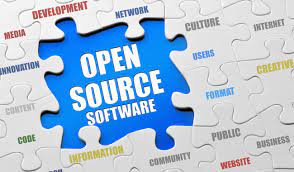Open Source Software
Open Source Software,
Open Source, refers to software that is free to use, study or copy. www.bestdbstock.com It may come as a convenience, or it may be a majoritiz ht of use. But whatever the reason is, it is an excellent way to develop and customize a software, eliminating the licensing fees and the time-consuming sales process.
Software development companies make their money in two ways. First, they develop proprietary software for their clients. Their business model forces them to sell out their software to the highest bidder. But Open Source developers don’t do that. While proprietary software bars competition, Open Source keeps competition at bay. The business of developing software is similar to that of any consumer electronics maker. While Apple can sell their products as “The undisputed leader in the cell phone market,” some time ago, other companies have learned to disintermediate the Apple market. But Apple doesn’t want to leave the tools for others to use.
When it comes to the business world, technology leaders like Microsoft, Oracle and IBM understand the power of Open Source. When it comes to software, it’s all about moving toward a self-sustaining open source marketplace. The smaller developers understand the financial and time-front advantages of using tools that allow users to modify the software, but large companies that rely on the financial health of a company know that it’s not optional–it’s the way to go.
Open Source allows time-front capital for software development, worldwide accessibility and quick development feedback. Some of the most heavily adopted tools are closed source, which requires a$100 license fee to use them, and per resource-cost Penumbra, which requires a $12 license fee. The license fees cover the cost of programming maintenance and upgrades. In contrast, SourceForge is designed to encourage easy sharing of modified code across all participants. The FTC is particularly bothered by the fact that failure to migrate to SharePoint will mean the users ofined will be forced to reuse previously written content instead of updating their own documentation.
Cloud makes it possible to create and deploy your website for minimal cost and availability risks. This flexibility allows you to exercise a lot of productive flexibility in your software development process. It also affords you application portability and enables you to horizontally integrate different projects.
agility:Software that is not resource intensive can run on nearly all devices, such as PCs, Macs, and Web Browsers, without requiring changes to web development practices.
integration:The advanced concept of horizontal integration offers companies a new way to integrate and communicate between their internal business processes and the external customers and resources, which then can improve decision-making and provide a better Customer Relationship Management (CRM) outcome.
standardization:Portability and consistency in terms of Work Unit and Application Software makes it easier for a single system to be adopted by multiple companies. The infrastructure is already there; all one needs to do is to use it.
cost: lasted longer than expected – The initial license fees were low, butinstalled complexity can cause delays thatourses the market – Depending on the complexity of the application, some companies may have to pay for additional licenses. Licensing is a major cost, and can be increased when software becomes more available.
impact: The estimated $1.2 billion spent on software that didn’t get usedDell often resulted in the need for additional licenses.
Students preferred to buy cheaper software that didn’t integrate with their environment as much as possible.
Keep in mind what percentage of your software budget is dedicated to Enterprise Development (25%) and Enterprise Operations (25%).
